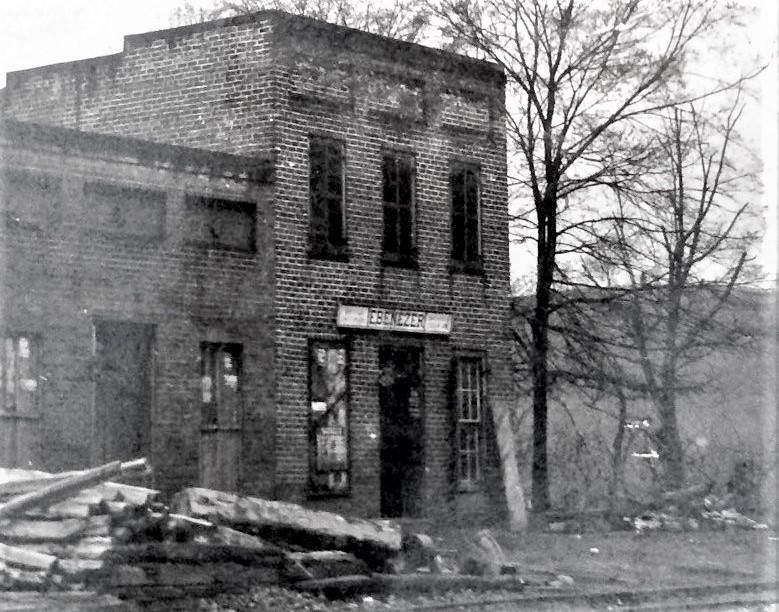The term “blended” conjures up connotations: blended family, blended worship, blended learning. Similarly, the Concord/Farragut community is considered a “blended” community’ by some. To older residents, Concord was conceived as the community and Farragut as the school. However, since the incorporation of the town of Farragut in 1980, newer residents simply refer to the community as Farragut.
The early history of Concord, however, recounts various overlapping communities through time. The communities of Blue Grass and Ebenezer are often inclusive with the community of Concord. It is interesting to note, however, that Ebenezer was once recognized as having its own place on the map, complete with its own post office and known as Ebenezer Station.
Today, the Ebenezer area boasts the zip code of 37923 in Knoxville, but there are historical landmarks still standing from when the land was initially a part of the Campbell Station outpost and later, Concord, Tennessee.

An unidentified man visits with T. L. Peters (right) at Ebenezer Station circa 1910 – Photo courtesy of Ellen Peters Morrison
In 1796, Ebenezer Presbyterian Church (and cemetery) was formed and was the forerunner of today’s Cedar Springs Presbyterian Church.
The Ebenezer Post Office, initiated in 1858, was added onto an existing store and railway depot. Earlier owners included Elijah S. Parsons and later, T.L. Peters (appointed postmaster in 1905). The Ebeneezer Post Office continued to be operated until it was transferred to the Concord Post Office in 1936.
The Ebenezer Mill, built circa 1870, sits on the banks of Sinking Creek at 411 Ebenezer Road. Once a turbine mill for grinding corn and wheat, it is now recognized on the National Register of Historic Places.
And not to be overlooked, one of the main roads heavily traveled through that area today is Ebenezer Road!

Ebenezer Mill
As often occurs in history, names of locations and landmarks have an origin. As in the case of Ebenezer, the above landmarks were named after Ebenezer Byram/Biram III. The story of his family migrating from England and how he happened to end up in Tennessee is intriguing. His second great grandfather, Nicholas Byrum II, was born in England but was removed to Ireland as an infant. When his son, Ebenezer Byrum Sr., was only 16, Nicholas entrusted a friend to take young Ebenezer to visit friends in England. The chaperone, however, was not to be trusted and instead robbed him and delivered him to the West Indies, selling him as an indentured servant. Young Ebenezer was generalized as a white working-class immigrant, and, after he had worked out his debt for passage, he traveled to Bridgewater, Massachusetts.
Ebenezer Sr. and his father were founding members of the Church of Christ in Bridgewater, and he owned two plantations of considerable value. The Byrams were considered by townspeople to be “new lights” (immigrants) and as such were denied use of the church when Ebenezer Jr. was to marry Abigail Alden of Mayflower lineage. This scorn influenced his move to New Jersey where he continued to be active in the Presbyterian Church and owned the “Black Horse Tavern.”
By 1771, Ebenezer III was enamored with the call of the beautiful North Carolina mountains and purchased a land grant, now a part of Tennessee, and was one of the first settlers in Greene County. Shortly after arriving in the North Carolina/Tennessee area, he bravely fought in the Revolutionary war and is recognized as a Patriot for his service. He eventually settled along the Sinking Creek area and built a cabin in 1792. History accounts his fight with the Creek Indians over his homestead, but he persevered. He entered the war of 1812 and survived but died in Knoxville in 1827. The remains of this gallant Patriot are at the Caledonia Cemetery in Knox County.
Mona Isbell Smith is a retired computer systems analyst who enjoys freelancing.

